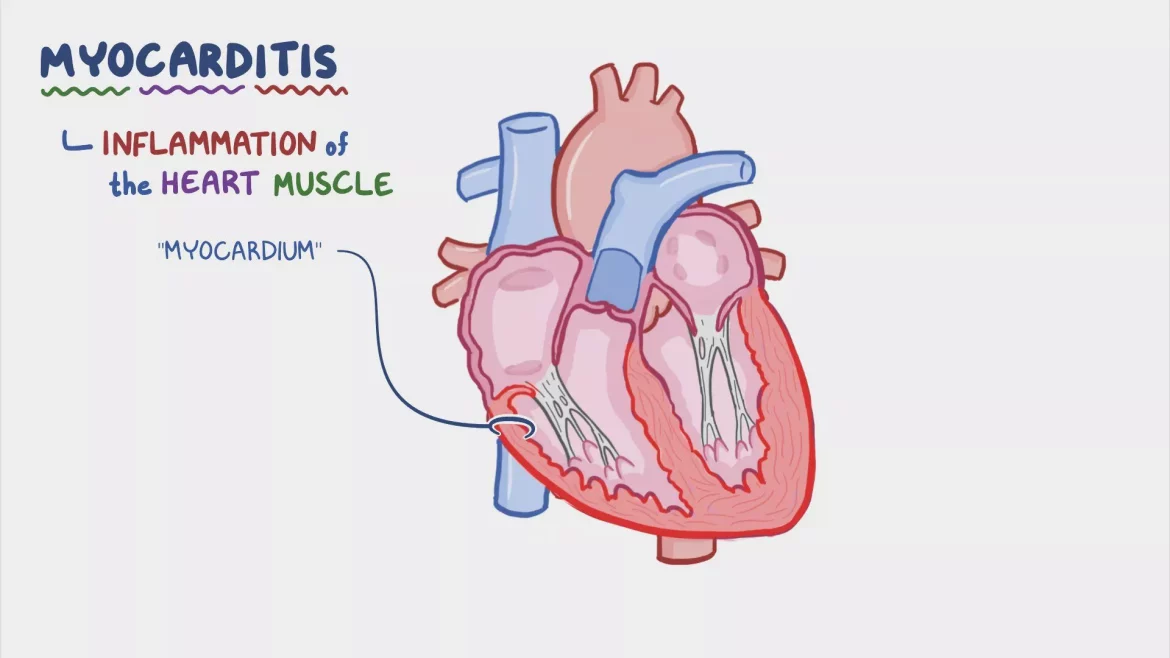Myocarditis and pericarditis are inflammatory conditions that affect the heart. Myocarditis involves inflammation of the heart muscle (myocardium), while pericarditis involves inflammation of the sac surrounding the heart (pericardium). These conditions can have serious health implications if not diagnosed and treated promptly. This article delves into the diagnostic processes for both myocarditis and pericarditis, exploring the clinical presentations, diagnostic tools, and the steps healthcare professionals take to accurately identify these conditions.
Clinical Presentations of Myocarditis And Pericarditis
The clinical presentations of myocarditis and pericarditis often overlap, but there are distinct symptoms that can help differentiate between the two.
Myocarditis Symptoms:
Chest pain or discomfort, often described as a sharp or stabbing pain.
Shortness of breath, especially during physical activity or at rest.
Fatigue and weakness.
Palpitations or irregular heartbeats.
Flu-like symptoms, such as fever, body aches, and sore throat.
See Also: Does Myocarditis Increase Blood Pressure
Pericarditis Symptoms:
- Sharp, stabbing chest pain that may radiate to the neck, shoulders, or back. This pain often worsens with deep breaths, coughing, or lying down.
- Fever.
- Shortness of breath when reclining.
- Heart palpitations.
- A dry cough.
Diagnostic Process
The diagnosis of myocarditis and pericarditis involves a combination of patient history, physical examination, laboratory tests, imaging studies, and sometimes, more invasive procedures.
1. Patient History and Physical Examination
The diagnostic journey begins with a thorough patient history and physical examination.
Patient History:
- Detailed questioning about the onset, duration, and nature of symptoms.
- History of recent infections, particularly viral illnesses.
- Any history of autoimmune diseases, which can be associated with myocarditis.
- Medications or substances that might be toxic to the heart.
Physical Examination:
Listening to heart sounds for any abnormalities, such as a pericardial friction rub in pericarditis or muffled heart sounds in severe cases.
Checking for signs of fluid retention, such as swelling in the legs or abdomen.
Observing for any signs of respiratory distress or cyanosis.
2. Laboratory Tests
Laboratory tests are crucial in supporting the diagnosis of myocarditis and pericarditis.
Blood Tests:
Complete Blood Count (CBC): To check for signs of infection or inflammation.
C-Reactive Protein (CRP) and Erythrocyte Sedimentation Rate (ESR): Elevated levels indicate inflammation.
Cardiac Enzymes (Troponins, Creatine Kinase-MB): Elevated levels suggest myocardial damage, which is common in myocarditis.
Viral Serologies and Polymerase Chain Reaction (PCR): To identify specific viral infections that may cause myocarditis.
see also: What Are The Causes of Heart Inflammation
3. Imaging Studies
Imaging studies play a pivotal role in the diagnosis of myocarditis and pericarditis.
Electrocardiogram (ECG):
Myocarditis: May show nonspecific changes, including ST-segment and T-wave abnormalities, or signs of heart block.
Pericarditis: Typically shows diffuse ST-segment elevation and PR-segment depression, which are hallmark signs.
Echocardiography:
This ultrasound-based test helps visualize the heart’s structure and function.
Myocarditis: Can reveal ventricular dysfunction, wall motion abnormalities, and sometimes, dilation of the heart chambers.
Pericarditis: May show pericardial effusion (fluid around the heart) and assess its impact on heart function.
Cardiac Magnetic Resonance Imaging (MRI):
Cardiac MRI is highly valuable for its ability to visualize inflammation, fibrosis, and edema in the myocardium.
It can help distinguish between active inflammation and chronic changes.
Late gadolinium enhancement on MRI is a key indicator of myocardial damage.
4. Differential Diagnosis
Differentiating myocarditis and pericarditis from other cardiac conditions is crucial.
Conditions to Rule Out:
Acute Coronary Syndrome (ACS): Symptoms can mimic myocarditis and pericarditis, but ACS is characterized by coronary artery blockages.
Pulmonary Embolism: Can cause chest pain and shortness of breath, but imaging studies (CT pulmonary angiography) help in differentiation.
Rheumatic Fever: Particularly in younger patients, rheumatic fever can cause carditis, mimicking myocarditis.
5. Advanced Diagnostic Techniques
Emerging diagnostic techniques are improving the accuracy of myocarditis and pericarditis diagnosis.
Cardiac Positron Emission Tomography (PET):
PET imaging with specific tracers can highlight areas of inflammation in the heart.
This technique is particularly useful in chronic or recurrent cases.
Biomarkers:
Research is ongoing to identify novel biomarkers that can specifically indicate myocardial inflammation or injury.
Biomarkers such as soluble ST2 and galectin-3 are being investigated for their potential diagnostic value.
Management And Follow-Up
The diagnosis of myocarditis and pericarditis necessitates careful management and follow-up.
Initial Management:
Hospitalization may be required for severe cases or those with significant complications.
Anti-inflammatory medications (e.g., NSAIDs, colchicine) are commonly used to manage pericarditis.
In cases of myocarditis, treatment focuses on managing heart failure symptoms and addressing the underlying cause.
Long-Term Follow-Up:
Regular follow-up with a cardiologist is essential to monitor recovery and detect any long-term complications.
Repeat imaging studies (e.g., echocardiography, MRI) may be necessary to assess the resolution of inflammation and cardiac function.
Conclusion
Diagnosing myocarditis and pericarditis involves a multi-faceted approach that includes patient history, physical examination, laboratory tests, imaging studies, and sometimes invasive procedures. Early and accurate diagnosis is crucial for effective management and to prevent potential complications. Advances in diagnostic techniques continue to enhance our ability to detect these conditions accurately, improving patient outcomes. If you experience symptoms suggestive of myocarditis or pericarditis, seeking prompt medical attention is essential for timely diagnosis and treatment.

